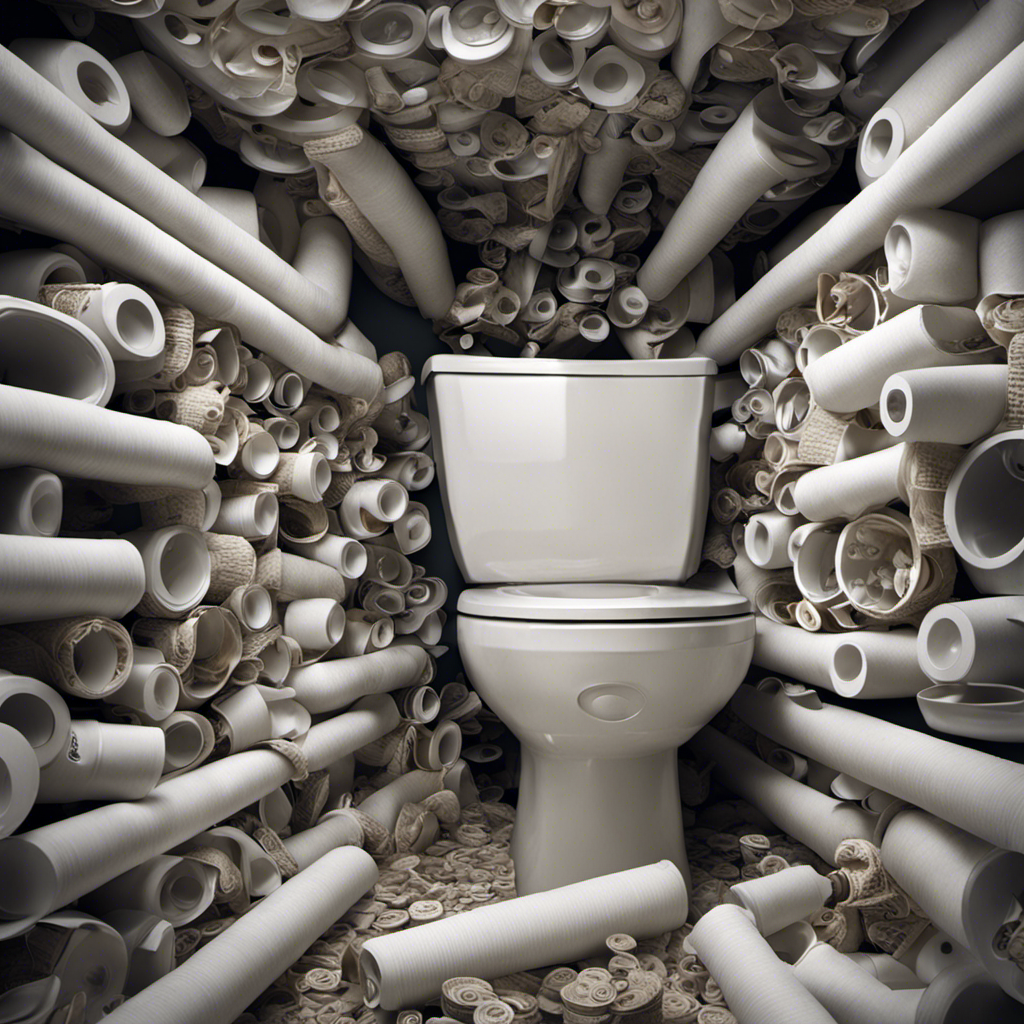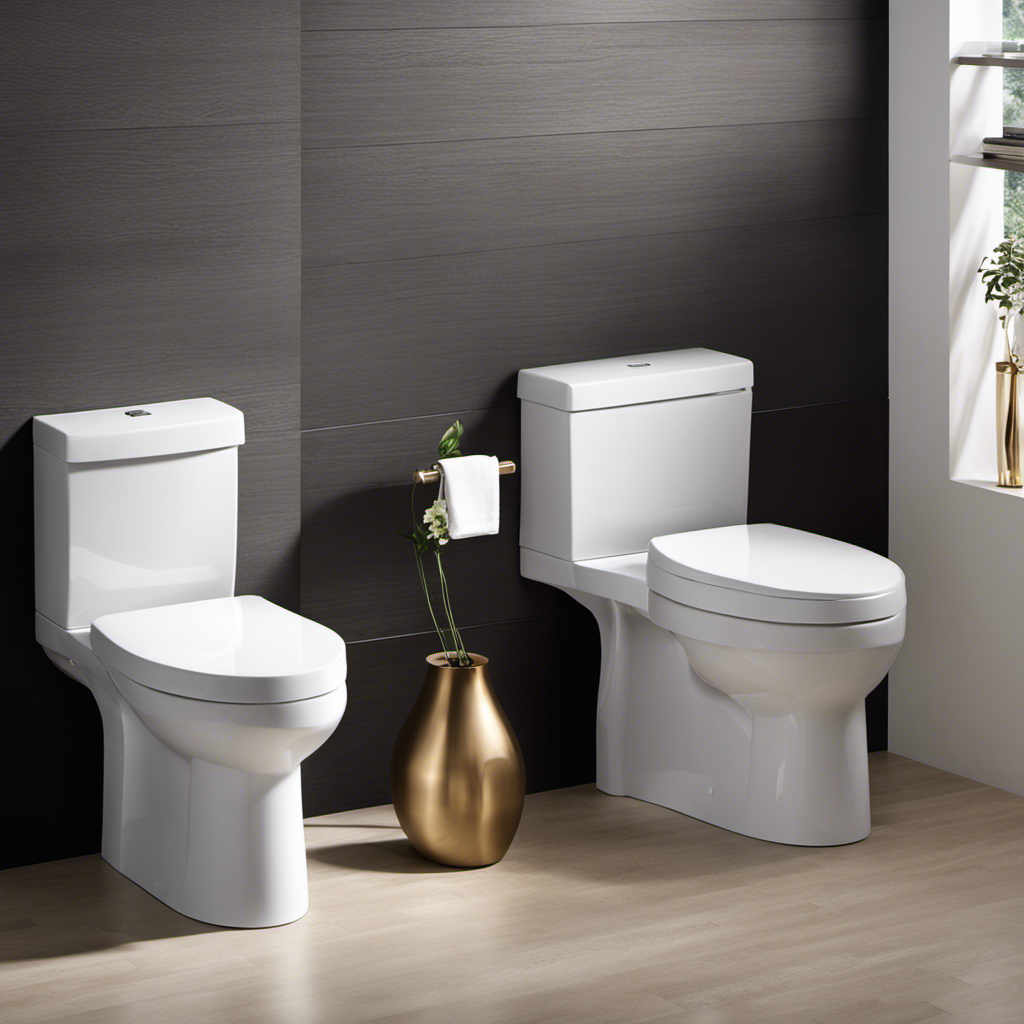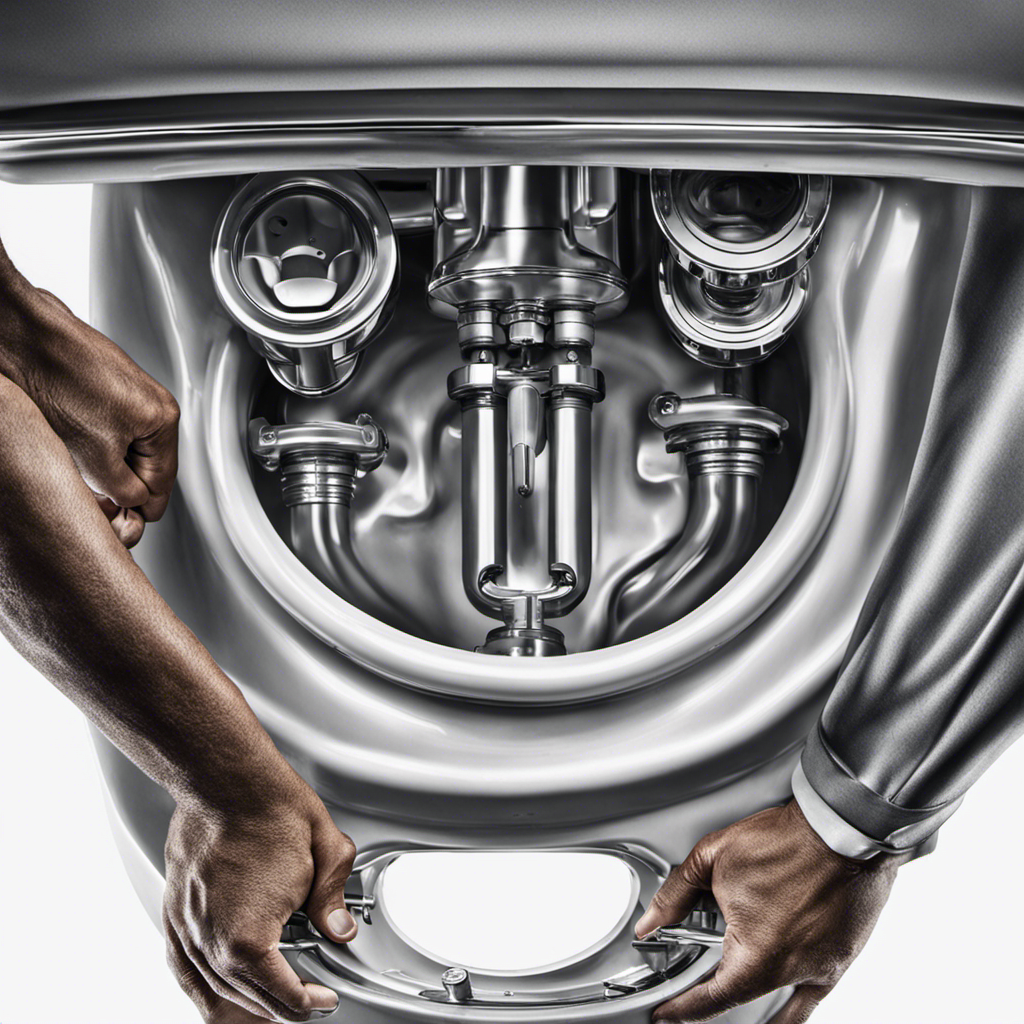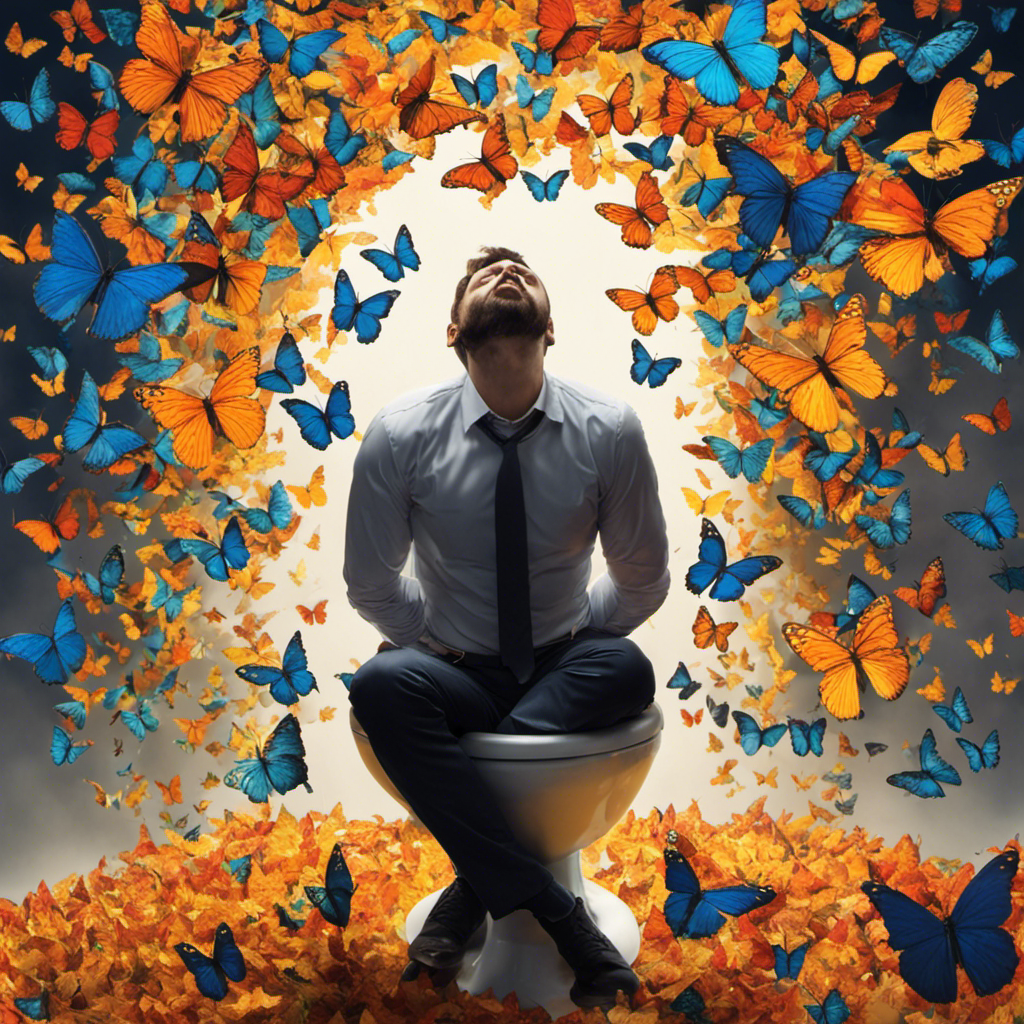As a plumber, I’ve seen it all when it comes to clogged toilets. It’s a problem that can strike at the most inconvenient times, leaving us scrambling for a solution.
But have you ever wondered what exactly causes a clogged toilet? In this article, we’ll dive into the common culprits of toilet clogs, from foreign objects to excessive toilet paper.
We’ll also explore the impact of hard water and the surprising role that tree roots can play in backing up your toilet.
Get ready to uncover the mysteries of toilet blockage and find out how to keep your bathroom running smoothly.
Key Takeaways
- Excessive toilet paper usage is a common cause of toilet clogs, so it’s important to be mindful of the amount of toilet paper being used and consider using thinner or single-ply toilet paper.
- Flushing other materials like wipes or sanitary products can also lead to clogs, so it’s important to only flush toilet paper and human waste.
- Foreign objects that don’t dissolve in water can get stuck in the pipes and cause clogs, potentially leading to plumbing expenses and damage to the bathroom floor.
- Hard water can accumulate in pipes and cause mineral buildup, restricting water flow and increasing the likelihood of clogs. Regular maintenance and using water softeners can help prevent these issues.
Common Culprits of Toilet Clogs
One of the most common culprits of toilet clogs is excessive toilet paper usage. When too much toilet paper is flushed down the toilet at once, it can easily get stuck in the pipes and create a blockage. This can lead to plumbing issues and unpleasant backups.
To prevent toilet clogs, it is important to be mindful of the amount of toilet paper being used. It is recommended to use only a reasonable amount per flush. Additionally, using thinner or single-ply toilet paper can help reduce the risk of clogs.
Another way to prevent clogs is to avoid flushing other materials down the toilet, such as wipes, sanitary products, or excessive amounts of tissue. Regular maintenance, like using a plunger or occasionally using a drain cleaner, can also help keep the pipes clear and prevent clogs.
Impact of Foreign Objects on Toilet Drainage
If you’re not careful with what you flush, foreign objects can seriously affect the drainage of your toilet. It may seem harmless to flush items like tissues or cotton balls, but these can easily cause blockages in your toilet’s pipes.
Here are three ways foreign objects can impact your toilet’s drainage:
-
Clogs: Foreign objects that are not designed to dissolve or break down in water can get stuck in the pipes, leading to clogs. These clogs can prevent water from flowing freely and cause your toilet to back up.
-
Pipe damage: Sharp or large foreign objects can cause damage to the pipes themselves. They can scratch or crack the pipes, creating rough surfaces that can catch other debris and further contribute to clogs.
-
Expensive repairs: Dealing with foreign objects in your toilet can be costly. In some cases, the entire toilet may need to be removed to remove the object causing the blockage. This can result in not only plumbing expenses but also potential damage to your bathroom floor.
To avoid these issues, it’s crucial to only flush toilet paper and human waste down the toilet.
The Role of Excessive Toilet Paper in Clogging
Be mindful of using too much toilet paper as it can easily lead to blockages in your pipes.
Excessive toilet paper is a common culprit when it comes to clogged toilets. While it is important to maintain proper hygiene, it is equally important to be conscious of the amount of toilet paper you use.
When too much toilet paper is flushed down the toilet, it can accumulate and form a blockage in the pipes. This can result in a slow-draining or completely clogged toilet.
To avoid such issues, it is essential to practice proper toilet maintenance. This includes using only the necessary amount of toilet paper and ensuring that it is flushed down with sufficient water to prevent blockages.
Regular maintenance, such as periodic inspections and pipe cleaning, can also help prevent clogs caused by excessive toilet paper.
Understanding the Effects of Hard Water on Toilet Blockage
Understanding the effects of hard water on pipes can help prevent blockages.
Hard water, which contains high levels of minerals like calcium and magnesium, can accumulate in pipes over time, forming hard water deposits or mineral buildup.
Here are three important things to know about the effects of hard water on toilet blockage:
-
Reduced water flow: The mineral buildup from hard water can restrict the flow of water in your toilet pipes, leading to slower flushing and even complete blockages.
-
Increased risk of clogs: Hard water deposits create a rough surface inside the pipes, making it easier for other debris, like toilet paper or waste, to get stuck. This increases the likelihood of clogs.
-
Plumbing damage: The mineral buildup can corrode and damage pipes over time, resulting in leaks and costly repairs. Regular maintenance and using water softeners can help prevent these issues caused by hard water.
How Tree Roots Can Cause Toilet Backups
Tree roots can infiltrate your plumbing system and lead to backups in the toilet.
Tree root infiltration is a common issue that can cause significant damage to your plumbing system if left unnoticed. As trees grow, their roots seek out sources of water, and unfortunately, your plumbing pipes are a perfect target. Once the roots find a small crack or joint in the pipes, they will start to invade and grow inside, causing blockages and even pipe bursts.
To prevent tree root infiltration, regular plumbing maintenance is essential. This includes inspecting your pipes for any signs of damage, such as leaks or slow drains. Additionally, using root barriers or chemical treatments can help deter tree roots from reaching your pipes.
Frequently Asked Questions
How Can I Prevent My Toilet From Getting Clogged in the First Place?
To prevent my toilet from getting clogged in the first place, I take preventive measures. By being mindful of what I flush and avoiding common causes like excessive toilet paper or foreign objects, I can maintain a clog-free toilet.
Are There Any Specific Types of Toilet Paper That Are Less Likely to Cause Clogs?
There are alternatives to traditional toilet paper that may be less likely to cause clogs. Some types, like flushable wet wipes, are designed to break down more easily in water.
Can Using a Plunger Worsen the Clog or Damage the Toilet?
Using a plunger can sometimes worsen a clog or cause damage to the toilet. It’s important to use the plunger effectively and consider alternative unclogging methods, such as using a toilet auger or calling a professional plumber.
Are There Any Natural Remedies or DIY Solutions to Unclog a Toilet?
Well, let me tell you, there’s nothing like a DIY remedy or a natural solution to unclog a toilet. It’s amazing what a little know-how and some common household items can do!
What Should I Do if None of the Usual Methods Work and My Toilet Remains Clogged?
If none of the usual methods work and my toilet remains clogged, I would try alternative clog removal techniques such as using a plunger or a plumbing snake. If all else fails, it may be time to call for professional plumbing services.
Conclusion
In conclusion, understanding the causes of a clogged toilet is crucial for maintaining a smooth drainage system.
From foreign objects like toys to excessive toilet paper usage, each factor can wreak havoc on your porcelain throne.
Hard water can also contribute to blockages, like a stubborn boulder in a river’s path.
And let’s not forget the sneaky tree roots, creeping their way into your pipes like nature’s own clog monsters.
By staying informed and taking preventative measures, you can keep your toilet flowing freely and avoid the dreaded plunge.










